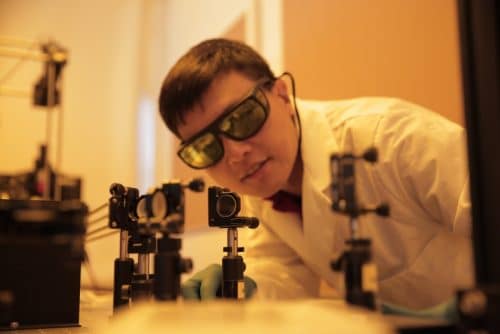Researchers from the University of Wisconsin-Madison have succeeded in developing miniaturized and highly efficient solar cells that could be used in the field of wearable medical detectors, smart watches, and even contact lenses capable of automatic focusing

[Translation by Dr. Nachmani Moshe]
Researchers from the University of Wisconsin-Madison have succeeded in developing miniaturized and highly efficient solar cells that could be used in the field of wearable medical detectors, smart watches, and even contact lenses capable of automatic focusing.
The research group developed a compact array of miniaturized electrodes placed side by side on transparent glass. The array, which has a filling factor of 60%, allows the cells to achieve a conversion efficiency of 5.2%, compared to a rate of 1.8% in similar existing cells.
"In terms of manufacturing, it's always easier to produce side-by-side structures," said Hongrui Jiang, a professor of electrical and computer engineering at the University of Wisconsin-Madison and the author of the paper. "A 'top-down' building production approach must be carried out in several stages and then go through a defined organization, a very challenging approach since it is a small scale. We were able to easily beat all the other side buildings."
The researchers examined the organization of a light source used to emit a new generation of lateral solar cells. The innovative solar cells manage to utilize almost three times more electricity from absorbed light compared to existing systems. “In other structures, a large volume is wasted because there are no electrodes or the electrodes are not placed in an economical configuration. The technology we developed allows us to build very compact side structures that are able to utilize the full volume."
The researchers are currently working on further miniaturizing solar cells and improving them by finding materials with greater efficiency in terms of transparency and electrical conductivity. Ultimately, the researchers plan to develop a very miniaturized and flexible solar cell that could power, for example, adjustable contact lenses in terms of the electricity reaching them.
The news about the study
